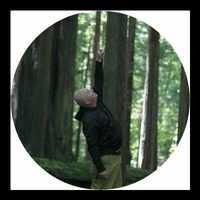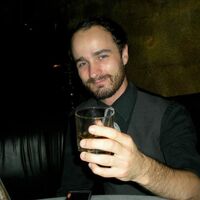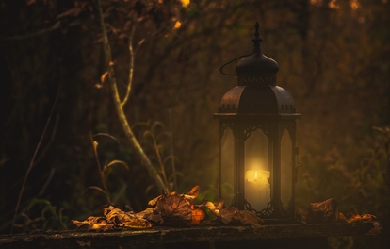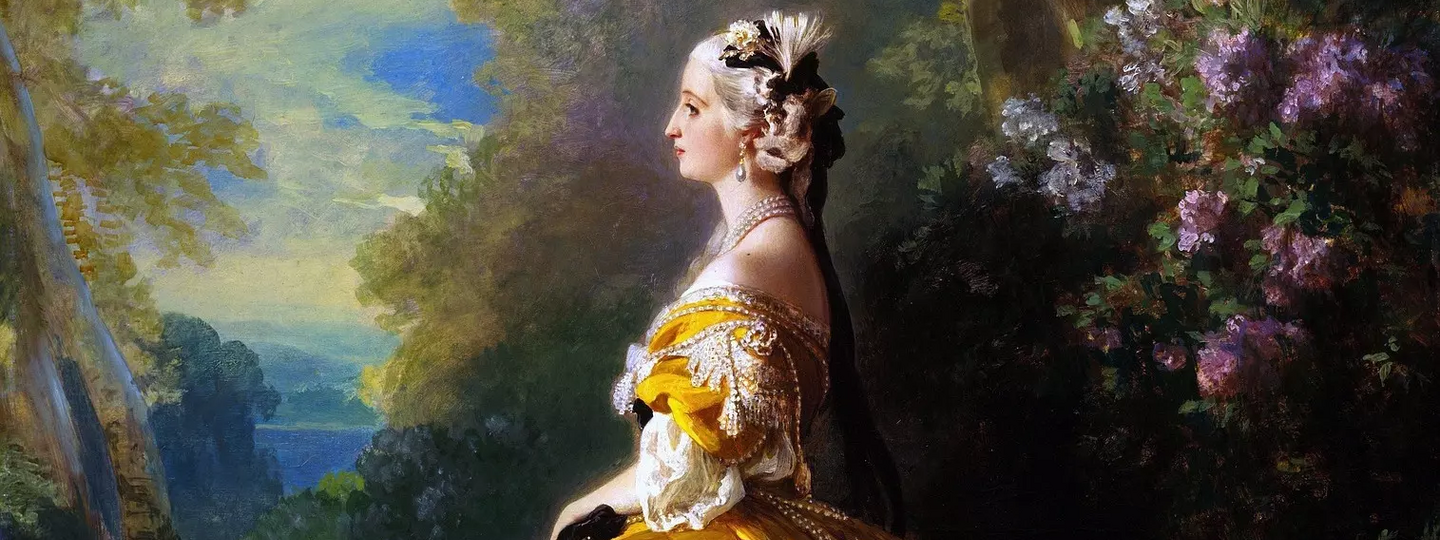
Info
The Empress Eugénie
Franz Xaver Winterhalter
1854
The Metropolitan Museum of Art
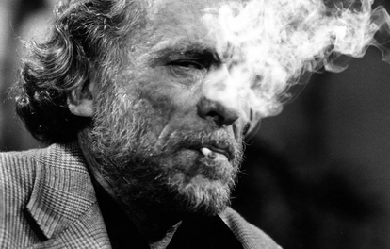
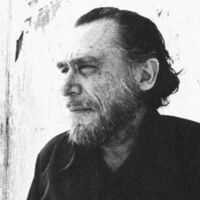
Henry Charles Bukowski (born Heinrich Karl Bukowski; August 16, 1920 – March 9, 1994) was an American poet, novelist and short story writer. His writing was influenced by the social, cultural and economic ambience of his home city of Los Angeles. It is marked by an emphasis on the ordinary lives of poor Americans, the act of writing, alcohol, relationships with women and the drudgery of work.
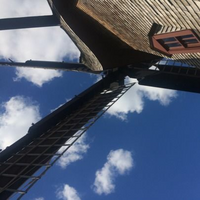
Hello. My name is Mike. I'm a 30something turning 102 this year. I'm the father to an amazing little girl who I'm unable to see as much as I would like, because I was unable to save her from a lifetime of pain. On this page you'll hear me drone on about topics such as this, being a victim of partners and parents with personality disorders, OCD, PTSD, suicidal ideation, and the occasional nonsensical poem about a snail or a garden gnome. There are horrible people in the world, and many of them are inescapable, and most of you would not believe the chaotic hell my life has led me through. But I have always tried to be the sort of person who I wish others would be. It's so much harder to be a bad person than a good person. Given the issues in my life, I might suffer hazards that would prevent me from furthering this message, so let me attempt to do so here. Be a good person. Know that nothing you do will ever change the world, and that all the help you give to others will ultimately be pointless. But that shouldn't stop you from trying to be the best person you can be. Live as altruistically and conscientiously towards others as possible. Hold open doors, be humble, apologize, offer help. If you see someone in need, don't wait for someone else to come along, because they might not. If you see a need, fill a need. Treat others with kindness and fairness, empathy and equity. If you hurt someone, find out how you can prevent yourself from doing so again in the future. Let people in when you're driving, spare some change to panhandlers, defend kids and animals when you see they're in trouble. The meaning of life is progress. Without growth, there can only be decay. It's too late for humanity as a species, but if everyone reading this could just try a little harder, maybe life wouldn't have to be so unfair. I want to take the time to thank those who follow me directly, as well as those who view my poems in passing. It does not go undetected or unappreciated, truly. Thank you for your support. I hope you all find whatever you’re looking for.
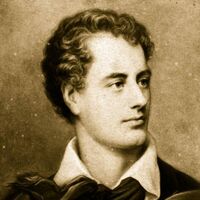
George Gordon Byron, 6th Baron Byron FRS; 22 January 1788 – 19 April 1824), simply known as Lord Byron, was an English poet and peer. One of the leading figures of the Romantic movement, Byron is regarded as one of the greatest English poets. He remains widely read and influential. Among his best-known works are the lengthy narrative poems Don Juan and Childe Harold's Pilgrimage; many of his shorter lyrics in Hebrew Melodies also became popular. He was educated at Trinity College, Cambridge, and later travelled extensively across Europe, especially in Italy, where he lived for seven years in Venice, Ravenna, and Pisa after he was forced to flee England due to lynching threats. During his stay in Italy, he frequently visited his friend and fellow poet Percy Bysshe Shelley. Later in life Byron joined the Greek War of Independence fighting the Ottoman Empire and died leading a campaign during that war, for which Greeks revere him as a folk hero. He died in 1824 at the age of 36 from a fever contracted after the First and Second Sieges of Missolonghi.
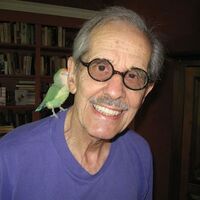
I was born in Hamilton, Ohio, in 1925, a confession that I am an old geezer. I served in the infantry during World War II, was wounded and discharged in 1946. I then obtained a B.A. degree with honors in English in 1949. Subsequently I taught in Cincinnati public schools and at the University of Cincinnati for the next 35 years. My poetry has appeared in: * Wall Street Journal * Hellas * Lyric * Envoi * Midwest Poetry Review (a sonnet won awards) * Aethlon * Light * Poet's View * Classical Outlook * Mind over Matter Several books have been self-published but Wormwood and Whines, a compilation of many of my poems, was published by Superior Books in 1999.

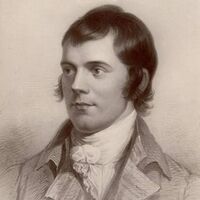
Robert Burns (25 January 1759 – 21 July 1796) (also known as Rabbie Burns, Scotland's favourite son, the Ploughman Poet, Robden of Solway Firth, the Bard of Ayrshire and in Scotland as simply The Bard) was a Scottish poet and a lyricist. He is widely regarded as the national poet of Scotland, and is celebrated worldwide. He is the best known of the poets who have written in the Scots language, although much of his writing is also in English and a “light” Scots dialect, accessible to an audience beyond Scotland. He also wrote in standard English, and in these his political or civil commentary is often at its most blunt.
I have been a hopeless romantic since I was a young boy. I have always been drawn to relationships and the experience of love. The exhilaration and emotions that flood into and coarse through those that are in love is the most intoxicating feeling possible, at least in my opinion. As you read these poems, you are reading my story. I write about my thoughts, my feelings, and my experiences. Forgive me if my writings are not of your flavor as I never did read much poetry from others.
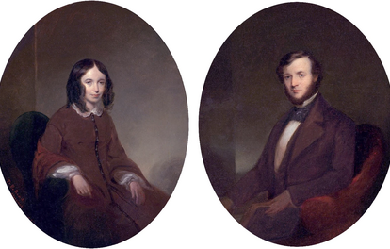
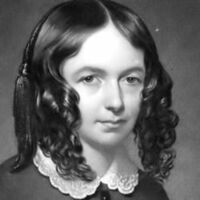
Elizabeth Barrett Browning (6 March 1806 – 29 June 1861) was one of the most prominent poets of the Victorian era. Her poetry was widely popular in both England and the United States during her lifetime. A collection of her last poems was published by her husband, Robert Browning, shortly after her death. Barrett Browning opposed slavery and published two poems highlighting the barbarity of slavers and her support for the abolitionist cause. The poems opposing slavery include "The Runaway Slave at Pilgrim's Point" and "A Curse for a Nation"; in the first she describes the experience of a slave woman who is whipped, raped, and made pregnant as she curses the slavers. She declared herself glad that the slaves were "virtually free" when the Emancipation Act abolishing slavery in British colonies was passed in 1833, despite the fact that her father believed that Abolitionism would ruin his business.
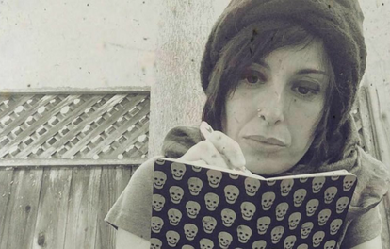
I am from Cecina in Tuscany, Italy. I moved to Davis, California, in 2009. My life experience in Davis has inspired many of my recent poems. I write my poetry only in Italian language. During the last few summer seasons I have been actively sharing my poems in Tuscany where I participate frequently in cultural and poetry events. As a child, after recognizing that I had a gift for poetry, my parents submitted my work in a variety of different contests. In 1989 I won my first prize. Starting in 1998, I published my poetry in newspapers and magazines, mostly in the area of Tuscany where I was raised. My first book, "Sono un Angelo Dimenticato," was published in 1998 from Ed.La Palma; in 2008 a second book, called "Nessuna Musa di Cristallo” was also published. My poem “Sto per lasciare tutto “(English version: “I’m about to leave everything”) was published in USA, for the Davis Poetry Book 2011. My books: "Extreme Fishing" 2011, "I colori dentro" 2016, both available on Amazon. "Sospesa fra due mondi" was published in Italy by Mds Editore, 2019. In 2020 I moved back to my country and I live in Turin where I work as a teacher.
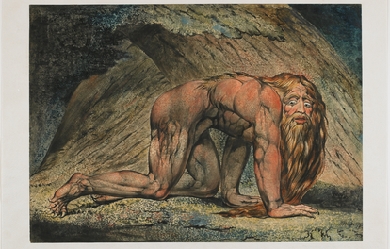
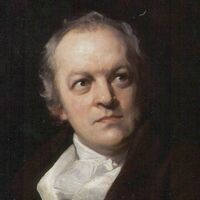
William Blake (28 November 1757 – 12 August 1827) was an English poet, painter, and printmaker. Largely unrecognised during his lifetime, Blake is now considered a seminal figure in the history of both the poetry and visual arts of the Romantic Age. His prophetic poetry has been said to form “what is in proportion to its merits the least read body of poetry in the English language”. His visual artistry has led one contemporary art critic to proclaim him “far and away the greatest artist Britain has ever produced”. Although he lived in London his entire life except for three years spent in Felpham he produced a diverse and symbolically rich corpus, which embraced the imagination as “the body of God”, or “Human existence itself”.
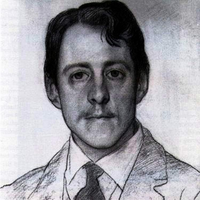
Robert Laurence Binyon, CH (10 August 1869– 10 March 1943) was an English poet, dramatist and art scholar. His most famous work, For the Fallen, is well known for being used in Remembrance Sunday services. Pre-war life Laurence Binyon was born in Lancaster, Lancashire, England. His parents were Frederick Binyon, and Mary Dockray. Mary’s father, Robert Benson Dockray, was the main engineer of the London and Birmingham Railway. The family were Quakers. Binyon studied at St Paul’s School, London. Then he read Classics (Honour Moderations) at Trinity College, Oxford, where he won the Newdigate Prize for poetry in 1891. Immediately after graduating in 1893, Binyon started working for the Department of Printed Books of the British Museum, writing catalogues for the museum and art monographs for himself. In 1895 his first book, Dutch Etchers of the Seventeenth Century, was published. In that same year, Binyon moved into the Museum’s Department of Prints and Drawings, under Campbell Dodgson. In 1909, Binyon became its Assistant Keeper, and in 1913 he was made the Keeper of the new Sub-Department of Oriental Prints and Drawings. Around this time he played a crucial role in the formation of Modernism in London by introducing young Imagist poets such as Ezra Pound, Richard Aldington and H.D. to East Asian visual art and literature. Many of Binyon’s books produced while at the Museum were influenced by his own sensibilities as a poet, although some are works of plain scholarship– such as his four-volume catalogue of all the Museum’s English drawings, and his seminal catalogue of Chinese and Japanese prints. In 1904 he married historian Cicely Margaret Powell, and the couple had three daughters. During those years, Binyon belonged to a circle of artists, as a regular patron of the Wiener Cafe of London. His fellow intellectuals there were Ezra Pound, Sir William Rothenstein, Walter Sickert, Charles Ricketts, Lucien Pissarro and Edmund Dulac. Binyon’s reputation before the war was such that, on the death of the Poet Laureate Alfred Austin in 1913, Binyon was among the names mentioned in the press as his likely successor (others named included Thomas Hardy, John Masefield and Rudyard Kipling; the post went to Robert Bridges). For the Fallen Moved by the opening of the Great War and the already high number of casualties of the British Expeditionary Force, in 1914 Laurence Binyon wrote his For the Fallen, with its Ode of Remembrance, as he was visiting the cliffs on the north Cornwall coast, either at Polzeath or at Portreath (at each of which places there is a plaque commemorating the event, though Binyon himself mentioned Polzeath in a 1939 interview. The confusion may be related to Porteath Farm being near Polzeath). The piece was published by The Times newspaper in September, when public feeling was affected by the recent Battle of Marne. Today Binyon’s most famous poem, For the Fallen, is often recited at Remembrance Sunday services in the UK; is an integral part of Anzac Day services in Australia and New Zealand and of the 11 November Remembrance Day services in Canada. The third and fourth verses of the poem (although often just the fourth) have thus been claimed as a tribute to all casualties of war, regardless of nation. They went with songs to the battle, they were young. Straight of limb, true of eyes, steady and aglow. They were staunch to the end against odds uncounted, They fell with their faces to the foe. They shall grow not old, as we that are left grow old: Age shall not weary them, nor the years condemn. At the going down of the sun and in the morning, We will remember them. They mingle not with their laughing comrades again; They sit no more at familiar tables of home; They have no lot in our labour of the day-time; They sleep beyond England’s foam Three of Binyon’s poems, including “For the Fallen”, were set by Sir Edward Elgar in his last major orchestra/choral work, The Spirit of England. In 1915, despite being too old to enlist in the First World War, Laurence Binyon volunteered at a British hospital for French soldiers, Hôpital Temporaire d’Arc-en-Barrois, Haute-Marne, France, working briefly as a hospital orderly. He returned in the summer of 1916 and took care of soldiers taken in from the Verdun battlefield. He wrote about his experiences in For Dauntless France (1918) and his poems, “Fetching the Wounded” and “The Distant Guns”, were inspired by his hospital service in Arc-en-Barrois. Artists Rifles, a CD audiobook published in 2004, includes a reading of For the Fallen by Binyon himself. The recording itself is undated and appeared on a 78 rpm disc issued in Japan. Other Great War poets heard on the CD include Siegfried Sassoon, Edmund Blunden, Robert Graves, David Jones and Edgell Rickword. Post-war life After the war, he returned to the British Museum and wrote numerous books on art; in particular on William Blake, Persian art, and Japanese art. His work on ancient Japanese and Chinese cultures offered strongly contextualised examples that inspired, among others, the poets Ezra Pound and W. B. Yeats. His work on Blake and his followers kept alive the then nearly-forgotten memory of the work of Samuel Palmer. Binyon’s duality of interests continued the traditional interest of British visionary Romanticism in the rich strangeness of Mediterranean and Oriental cultures. In 1931, his two volume Collected Poems appeared. In 1932, Binyon rose to be the Keeper of the Prints and Drawings Department, yet in 1933 he retired from the British Museum. He went to live in the country at Westridge Green, near Streatley (where his daughters also came to live during the Second World War). He continued writing poetry. In 1933–1934, Binyon was appointed Norton Professor of Poetry at Harvard University. He delivered a series of lectures on The Spirit of Man in Asian Art, which were published in 1935. Binyon continued his academic work: in May 1939 he gave the prestigious Romanes Lecture in Oxford on Art and Freedom, and in 1940 he was appointed the Byron Professor of English Literature at University of Athens. He worked there until forced to leave, narrowly escaping the German invasion of Greece in April 1941 . He was succeeded by Lord Dunsany, who held the chair in 1940-1941. Binyon had been friends with Ezra Pound since around 1909, and in the 1930s the two became especially close; Pound affectionately called him “BinBin”, and assisted Binyon with his translation of Dante. Another protégé was Arthur Waley, whom Binyon employed at the British Museum. Between 1933 and 1943, Binyon published his acclaimed translation of Dante’s Divine Comedy in an English version of terza rima, made with some editorial assistance by Ezra Pound. Its readership was dramatically increased when Paolo Milano selected it for the “The Portable Dante” in Viking’s Portable Library series. Binyon significantly revised his translation of all three parts for the project, and the volume went through three major editions and eight printings (while other volumes in the same series went out of print) before being replaced by the Mark Musa translation in 1981. At his death he was also working on a major three-part Arthurian trilogy, the first part of which was published after his death as The Madness of Merlin (1947). He died in Dunedin Nursing Home, Bath Road, Reading, on 10 March 1943 after an operation. A funeral service was held at Trinity College Chapel, Oxford, on 13 March 1943. There is a slate memorial in St. Mary’s Church, Aldworth, where Binyon’s ashes were scattered. On 11 November 1985, Binyon was among 16 Great War poets commemorated on a slate stone unveiled in Westminster Abbey’s Poets’ Corner. The inscription on the stone quotes a fellow Great War poet, Wilfred Owen. It reads: “My subject is War, and the pity of War. The Poetry is in the pity.” Daughters His three daughters Helen, Margaret and Nicolete became artists. Helen Binyon (1904–1979) studied with Paul Nash and Eric Ravilious, illustrating many books for the Oxford University Press, and was also a marionettist. She later taught puppetry and published Puppetry Today (1966) and Professional Puppetry in England (1973). Margaret Binyon wrote children’s books, which were illustrated by Helen. Nicolete, as Nicolete Gray, was a distinguished calligrapher and art scholar. Bibliography of key works Poems and verse * Lyric Poems (1894) * Porphyrion and other Poems (1898) * Odes (1901) * Death of Adam and Other Poems (1904) * London Visions (1908) * England and Other Poems (1909) * “For The Fallen”, The Times, 21 September 1914 * Winnowing Fan (1914) * The Anvil (1916) * The Cause (1917) * The New World: Poems (1918) * The Idols (1928) * Collected Poems Vol 1: London Visions, Narrative Poems, Translations. (1931) * Collected Poems Vol 2: Lyrical Poems. (1931) * The North Star and Other Poems (1941) * The Burning of the Leaves and Other Poems (1944) * The Madness of Merlin (1947) In 1915 Cyril Rootham set “For the Fallen” for chorus and orchestra, first performed in 1919 by the Cambridge University Musical Society conducted by the composer. Edward Elgar set to music three of Binyon’s poems ("The Fourth of August", “To Women”, and “For the Fallen”, published within the collection “The Winnowing Fan”) as The Spirit of England, Op. 80, for tenor or soprano solo, chorus and orchestra (1917). English arts and myth * Dutch Etchers of the Seventeenth Century (1895), Binyon’s first book on painting * John Crone and John Sell Cotman (1897) * William Blake: Being all his Woodcuts Photographically Reproduced in Facsimile (1902) * English Poetry in its relation to painting and the other arts (1918) * Drawings and Engravings of William Blake (1922) * Arthur: A Tragedy (1923) * The Followers of William Blake (1925) * The Engraved Designs of William Blake (1926) * Landscape in English Art and Poetry (1931) * English Watercolours (1933) * Gerard Hopkins and his influence (1939) * Art and freedom. (The Romanes lecture, delivered 25 May 1939). Oxford: The Clarendon press, (1939) Japanese and Persian arts * Painting in the Far East (1908) * Japanese Art (1909) * Flight of the Dragon (1911) * The Court Painters of the Grand Moguls (1921) * Japanese Colour Prints (1923) * The Poems of Nizami (1928) (Translation) * Persian Miniature Painting (1933) * The Spirit of Man in Asian Art (1936) Autobiography * For Dauntless France (1918) (War memoir) Biography * Botticelli (1913) * Akbar (1932) Stage plays * Brief Candles A verse-drama about the decision of Richard III to dispatch his two nephews * “Paris and Oenone”, 1906 * Godstow Nunnery: Play * Boadicea; A Play in eight Scenes * Attila: a Tragedy in Four Acts * Ayuli: a Play in three Acts and an Epilogue * Sophro the Wise: a Play for Children * (Most of the above were written for John Masefield’s theatre). * Charles Villiers Stanford wrote incidental music for Attila in 1907. References Wikipedia—https://en.wikipedia.org/wiki/Laurence_Binyon
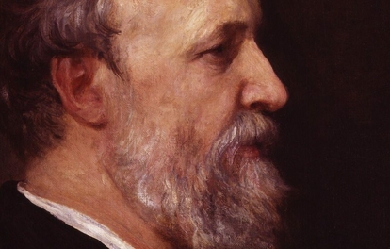
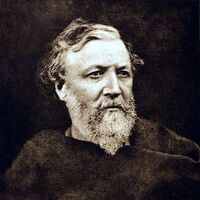
Robert Browning was born on May 7, 1812, in Camberwell, England. His mother was an accomplished pianist and a devout evangelical Christian. His father, who worked as a bank clerk, was also an artist, scholar, antiquarian, and collector of books and pictures. His rare book collection of more than 6,000 volumes included works in Greek, Hebrew, Latin, French, Italian, and Spanish. Much of Browning's education came from his well-read father. It is believed that he was already proficient at reading and writing by the age of five. A bright and anxious student, Browning learned Latin, Greek, and French by the time he was fourteen. From fourteen to sixteen he was educated at home, attended to by various tutors in music, drawing, dancing, and horsemanship.
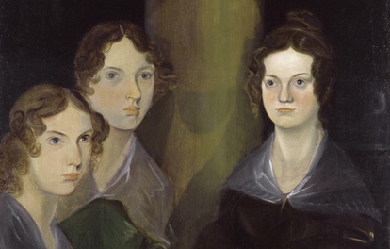
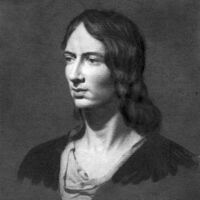
Emily Jane Brontë (30 July 1818 – 19 December 1848) was an English novelist and poet, best remembered for her solitary novel, Wuthering Heights, now considered a classic of English literature. Emily was the third eldest of the four surviving Brontë siblings, between the youngest Anne and her brother Branwell. She published under the pen name Ellis Bell. She was born in Thornton, near Bradford in Yorkshire, to Maria Branwell and Patrick Brontë. She was the younger sister of Charlotte Brontë and the fifth of six children. In 1824, the family moved to Haworth, where Emily's father was perpetual curate, and it was in these surroundings that their literary gifts flourished.
.jpg)
Since as long as I can remember writing has been my escape from insanity. It is my one safe place where all the puzzle pieces fit. From an early age I fell in love with the written word. When I first learned to read I found my lifelong best friend. I can still remember reading poems from Shel Silverstein and being so enthralled that I was just read each and every poem over and over until I had every line of every poem memorized. It didn't take long before I too learned the power was not limited to others words, thoughts, and ideas. Books have always been my inspiration, but I quickly realized I didn't just want to read others words but I wanted to be the words read by others. I wanted to be that voice that inspired others. Writing has always been an innate part of my being and I know this will never change. It is the escape with my pen that has shown me who I am and who I want to be. I hope I can one day inspire others with my passion for the written word just as I was that first time I picked up a book and fell in love. My poems are sometimes dark, often reflecting the shadows in my heart, because I refuse to be dishonest with myself, but there is always light waiting for me when all the lies are gone. I'm truly blessed to have writing as a friend.
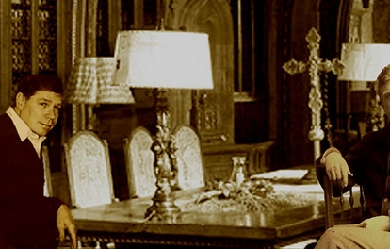
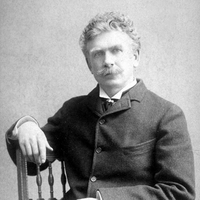
Ambrose Gwinnett Bierce (June 24, 1842– circa 1914) was an American Civil War soldier, wit, and writer. Bierce’s book The Devil’s Dictionary was named as one of “The 100 Greatest Masterpieces of American Literature” by the American Revolution Bicentennial Administration. His story An Occurrence at Owl Creek Bridge has been described as “one of the most famous and frequently anthologized stories in American literature”; and his book Tales of Soldiers and Civilians (also published as In the Midst of Life) was named by the Grolier Club as one of the 100 most influential American books printed before 1900.
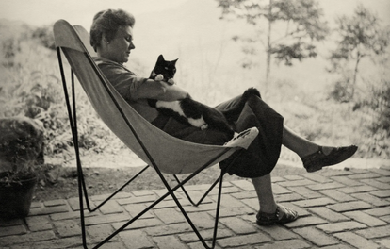
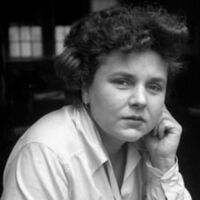
Elizabeth Bishop (February 8, 1911 – October 6, 1979) was an American poet, short-story writer, and recipient of the 1976 Neustadt International Prize for Literature. She was the Poet Laureate of the United States from 1949 to 1950, the Pulitzer Prize winner for Poetry in 1956 and the National Book Award winner in 1970.
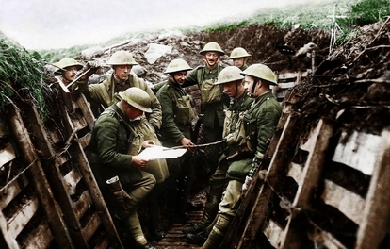
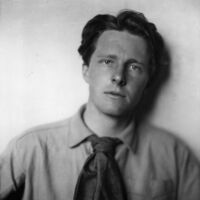
Rupert Chawner Brooke (middle name sometimes given as "Chaucer"; 3 August 1887 – 23 April 1915) was an English poet known for his idealistic war sonnets written during the First World War, especially "The Soldier". He was also known for his boyish good looks, which were said to have prompted the Irish poet W. B. Yeats to describe him as "the handsomest young man in England”. Brooke belonged to another literary group known as the Georgian Poets and was one of the most important of the Dymock poets, associated with the Gloucestershire village of Dymock where he spent some time before the war. He also lived in the Old Vicarage, Grantchester. While travelling in Europe he prepared a thesis, entitled "John Webster and the Elizabethan Drama", which won him a scholarship to King's College, Cambridge, where he became a member of the Cambridge Apostles, was elected as President of the Cambridge University Fabian Society, helped found the Marlowe Society drama club and acted in plays including the Cambridge Greek Play. To Rupert Brooke (by Eden Phillpotts, from ‘Plain Song, 1914-1916’) Though we, a happy few, Indubitably knew That from the purple came This poet of pure flame, The world first saw his light Flash on an evil night, And heard his song from far Above the drone of war. Out of the primal dark He leapt, like lyric lark, Singing his aubade strain; Then fell to earth again. We garner all he gave, And on his hero grave, For love and honour strew, Rosemary, myrtle, rue. Son of the Morning, we Had kept you thankfully; But yours the asphodel: Hail, singer, and farewell!
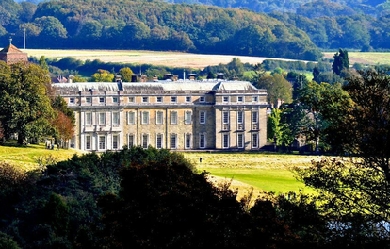
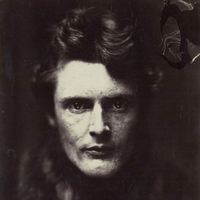
Wilfrid Scawen Blunt (17 August 1840– 10 September 1922) (sometimes spelled “Wilfred”) was an English poet and writer. He and his wife, Lady Anne Blunt travelled in the Middle East and were instrumental in preserving the Arabian horse bloodlines through their farm, the Crabbet Arabian Stud. He was best known for his poetry, which was published in a collected edition in 1914, but also wrote a number of political essays and polemics. Blunt is also known for his views against imperialism, viewed as relatively enlightened for his time. Early life Blunt was born at Petworth House in Sussex and served in the Diplomatic Service from 1858 to 1869. He was raised in the faith of his mother, a Catholic convert, and educated at Twyford School, Stonyhurst, and at St Mary’s College, Oscott. His most memorable line of poetry on the subject comes from Satan Absolved (1899), where the devil, answering a Kiplingesque remark by God, snaps back: ‘The white man’s burden, Lord, is the burden of his cash’ Here, Longford explains, 'Blunt stood Rudyard Kipling’s familiar concept on its head, arguing that the imperialists’ burden is not their moral responsibility for the colonised peoples, but their urge to make money out of them.' Personal life In 1869, Blunt married Lady Anne Noel, the daughter of the Earl of Lovelace and Ada Lovelace, and granddaughter of Lord Byron. Together the Blunts travelled through Spain, Algeria, Egypt, the Syrian Desert, and extensively in the Middle East and India. Based upon pure-blooded Arabian horses they obtained in Egypt and the Nejd, they co-founded Crabbet Arabian Stud, and later purchased a property near Cairo, named Sheykh Obeyd which housed their horse breeding operation in Egypt. In 1882, he championed the cause of Urabi Pasha, which led him to be banned from entering Egypt for four years. Blunt generally opposed British imperialism as a matter of philosophy, and his support for Irish causes led to his imprisonment in 1888. Wilfrid and Lady Anne’s only child to live to maturity was Judith Blunt-Lytton, 16th Baroness Wentworth, later known as Lady Wentworth. As an adult, she was married in Cairo but moved permanently to the Crabbet Park Estate in 1904. Wilfrid had a number of mistresses, among them a long term relationship with the courtesan Catherine “Skittles” Walters, and the Pre-Raphaelite beauty, Jane Morris. Eventually, he moved another mistress, Dorothy Carleton, into his home. This event triggered Lady Anne’s legal separation from him in 1906. At that time, Lady Anne signed a Deed of Partition drawn up by Wilfrid. Under its terms, unfavourable to Lady Anne, she kept the Crabbet Park property (where their daughter Judith lived) and half the horses, while Blunt took Caxtons Farm, also known as Newbuildings, and the rest of the stock. Always struggling with financial concerns and chemical dependency issues, Wilfrid sold off numerous horses to pay debts and constantly attempted to obtain additional assets. Lady Anne left the management of her properties to Judith, and spent many months of every year in Egypt at the Sheykh Obeyd estate, moving there permanently in 1915. Due primarily to the manoeuvering of Wilfrid in an attempt to disinherit Judith and obtain the entire Crabbet property for himself, Judith and her mother were estranged at the time of Lady Anne’s death in 1917. As a result, Lady Anne’s share of the Crabbet Stud passed to Judith’s daughters, under the oversight of an independent trustee. Blunt filed a lawsuit soon afterward. Ownership of the Arabian horses went back and forth between the estates of father and daughter in the following years. Blunt sold more horses to pay off debts and shot at least four in an attempt to spite his daughter, an action which required intervention of the trustee of the estate with a court injunction to prevent him from further “dissipating the assets” of the estate. The lawsuit was settled in favour of the granddaughters in 1920, and Judith bought their share from the trustee, combining it with her own assets and reuniting the stud. Father and daughter briefly reconciled shortly before Wilfrid Scawen Blunt’s death in 1922, but his promise to rewrite his will to restore Judith’s inheritance never materialised. Blunt was a friend of Winston Churchill, aiding him in his 1906 biography of his father, Randolph Churchill, whom Blunt had befriended years earlier in 1883 at a chess tournament. Work in Africa In the early 1880s, Britain was struggling with its Egyptian colony. Wilfrid Blunt was sent to notify Sir Edward Malet, the British agent, as to the Egyptian public opinion concerning the recent changes in government and development policies. In mid-December 1881, Blunt met with Ahmed ‘Urabi, known as Arabi or 'El Wahid’ (the Only One) due to his popularity with the Egyptians. Arabi was impressed with Blunt’s enthusiasm and appreciation of his culture. Their mutual respect created an environment in which Arabi could peacefully explain the reasoning behind a new patriotic movement, 'Egypt for the Egyptians’. Over the course of several days, Arabi explained the complicated background of the revolutionaries and their determination to rid themselves of the Turkish oligarchy. Wilfrid Blunt was vital in the relay of this information to the British empire although his anti-imperialist views were disregarded and England mounted further campaigns in the Sudan in 1885 and 1896–98. Egyptian Garden scandal In 1901, a pack of fox hounds was shipped over to Cairo to entertain the army officers, and subsequently a foxhunt took place in the desert near Cairo. The fox was chased into Blunt’s garden, and the hounds and hunt followed it. As well as a house and garden, the land contained the Blunt’s Sheykh Obeyd stud farm, housing a number of valuable Arabian horses. Blunt’s staff challenged the trespassers– who, though army officers, were not in uniform– and beat them when they refused to turn back. For this, the staff were accused of assault against army officers and imprisoned. Blunt made strenuous efforts to free his staff, much to the embarrassment of the British army officers and civil servants involved. Bibliography * Sonnets and Songs. By Proteus. John Murray, 1875 * Aubrey de Vere (ed.): Proteus and Amadeus: A Correspondence Kegan Paul, 1878 * The Love Sonnets of Proteus. Kegan Paul, 1881 * The Future of Islam Kegan Paul, Trench, London 1882 * Esther (1892) * Griselda Kegan Paul, Trench, Trübner, 1893 * The Quatrains of Youth (1898) * Satan Absolved: A Victorian Mystery. J. Lane, London 1899 * Seven Golden Odes of Pagan Arabia (1903) * Atrocities of Justice under the English Rule in Egypt. T. F. Unwin, London 1907. * Secret History of the English Occupation of Egypt Knopf, 1907 * India under Ripon; A Private Diary T. Fisher Unwin, London 1909. * Gordon at Khartoum. S. Swift, London 1911. * The Land War in Ireland. S. Swift, London 1912 * The Poetical Works. 2 Vols. . Macmillan, London 1914 * My Diaries. Secker, London 1919; 2 Vols. Knopf, New York 1921 References Wikipedia—https://en.wikipedia.org/wiki/Wilfrid_Scawen_Blunt
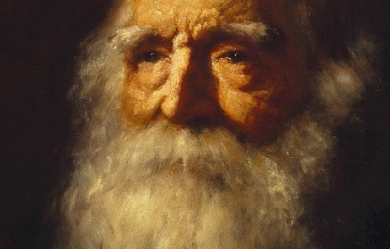
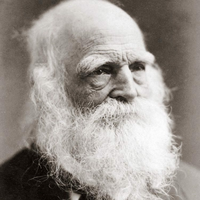
William Cullen Bryant (November 3, 1794– June 12, 1878) was an American romantic poet, journalist, and long-time editor of the New York Evening Post. Youth and education Bryant was born on November 3, 1794, in a log cabin near Cummington, Massachusetts; the home of his birth is today marked with a plaque. He was the second son of Peter Bryant (b. Aug. 12, 1767, d. Mar. 20, 1820), a doctor and later a state legislator, and Sarah Snell (b. Dec. 4, 1768, d. May 6, 1847). The genealogies of both of his parents trace back to passengers on the Mayflower; his mother’s to John Alden (b. 1599, d. 1687); his father’s to Francis Cooke (b. 1577, d. 1663). He was also a nephew of Charity Bryant, a Vermont seamstress who is the subject of Rachel Hope Cleves’ 2014 book Charity and Sylvia: A Same-Sex Marriage in Early America. Bryant and his family moved to a new home when he was two years old. The William Cullen Bryant Homestead, his boyhood home, is now a museum. After just one year at Williams College (he entered with sophomore standing), he hoped to transfer to Yale, but a talk with his father led to the realization that family finances would not support it. His father counseled a legal career as his best available choice, and the disappointed poet began to study law in Worthington and Bridgewater in Massachusetts. He was admitted to the bar in 1815 and began practicing law in nearby Plainfield, walking the seven miles from Cummington every day. On one of these walks, in December 1815, he noticed a single bird flying on the horizon; the sight moved him enough to write “To a Waterfowl”. Bryant developed an interest in poetry early in life. Under his father’s tutelage, he emulated Alexander Pope and other Neo-Classic British poets. “The Embargo”, a savage attack on President Thomas Jefferson published in 1808, reflected Dr. Bryant’s Federalist political views. The first edition quickly sold out—partly because of publicity attached to the poet’s young age. A second, expanded edition included Bryant’s translation of classical verse. During his collegiate studies and his reading for the law, he wrote little poetry, but encounters with the Graveyard Poets and then Wordsworth regenerated his passion for “the witchery of song.” Poetry “Thanatopsis” is Bryant’s most famous poem, which Bryant may have been working on as early as 1811. In 1817 his father took some pages of verse from his son’s desk, and at the invitation of Willard Phillips, an editor of the North American Review who had previously been tutored in the classics by Dr. Bryant, he submitted them along with his own work. The editor of the Review, Edward Tyrrel Channing, read the poem to his assistant, Richard Henry Dana, who immediately exclaimed, “That was never written on this side of the water!” Someone at the North American joined two of the son’s discrete fragments, gave the result the Greek-derived title Thanatopsis ("meditation on death"), mistakenly attributed it to the father, and published it. After clarification of the authorship, the son’s poems began appearing with some regularity in the "[Review]". “To a Waterfowl”, published in 1821 was the most popular. On January 11, 1821, Bryant, still striving to build a legal career, married Frances Fairchild. Soon after, having received an invitation to address the Harvard University Phi Beta Kappa Society at the school’s August commencement, Bryant spent months working on “The Ages”, a panorama in verse of the history of civilization, culminating in the establishment of the United States. As it would in all collections he subsequently issued, “The Ages” led the volume, also entitled Poems, which he arranged to publish on the same trip to Cambridge. For that book, he added sets of lines at the beginning and end of “Thanatopsis” that changed the poem. His career as a poet was now established, though recognition as America’s leading poet waited until 1832, when an expanded Poems was published in the U.S. and, with the assistance of Washington Irving, in Britain. His poetry has been described as being “of a thoughtful, meditative character, and makes but slight appeal to the mass of readers.” Editorial career From 1816 to 1825, Bryant depended on his law practice in Great Barrington, Massachusetts to sustain his family financially, but the strain of dealing with unsophisticated neighbors and juridical pettifoggery pushed him to trade his unrewarding profession for New York City and the promise of a literary career. With the encouragement of a distinguished and well-connected literary family, the Sedgwicks, he quickly gained a foothold in New York City’s vibrant cultural life. His first employment, in 1825, was as editor of the New-York Review, which within the next year merged with the United States Review and Literary Gazette. But in the throes of the failing struggle to raise subscriptions, he accepted part-time duties with the New-York Evening Post under William Coleman; then, partly because of Coleman’s ill health, traceable to the consequences of a duel and then a stroke, Bryant’s responsibilities expanded rapidly. From Assistant Editor he rose to Editor-in-Chief and co-owner of the newspaper that had been founded by Alexander Hamilton. Over the next half century, the “Post” would become the most respected paper in the city and, from the election of Andrew Jackson, the major platform in the Northeast for the Democratic Party and subsequently of the Free Soil and Republican Parties. In the process, the Evening-Post also became the pillar of a substantial fortune. From his Federalist beginnings, Bryant had shifted to being one of the most liberal voices of the century. An early supporter of organized labor, with his 1836 editorials the right of workmen to strike, Bryant also defended of religious minorities and immigrants, and promoted the abolition of slavery. He “threw himself into the foreground of the battle for human rights” and did not cease speaking out against the corrupting influence of certain bankers in spite of their efforts to break down the paper. According to newspaper historian Frank Luther Mott, Bryant was “a great liberal seldom done justice by modern writers”. Ironically, the boy who first tasted fame for his diatribe against Thomas Jefferson and his party became one of the key supporters in the Northeast of that same party under Jackson. Bryant’s views, always progressive though not quite populist, in course led him to join the Free Soilers, and when the Free Soil Party became a core of the new Republican Party in 1856, Bryant vigorously campaigned for John Frémont. That exertion enhanced his standing in party councils, and in 1860, he was one of the prime Eastern exponents of Abraham Lincoln, whom he introduced at Cooper Union. (That “Cooper Union speech” lifted Lincoln to the nomination, and then the presidency.) Although literary historians have neglected his fiction, Bryant’s stories over the seven-year period from his time with the Review to the publication of Tales of Glauber Spa in 1832 show a variety of strategies, making him the most inventive of practitioners of the genre during this early stage of its evolution. Bryant edited the very successful Picturesque America which was published between 1872 and 1874. This two-volume set was lavishly illustrated and described scenic places in the United States and Canada. Later years In his last decade, Bryant shifted from writing his own poetry to a blank verse translation of Homer’s works. He assiduously worked on the Iliad and The Odyssey from 1871 to 1874. He is also remembered as one of the principal authorities on homeopathy and as a hymnist for the Unitarian Church—both legacies of his father’s enormous influence on him. Bryant died in 1878 of complications from an accidental fall suffered after participating in a Central Park ceremony honoring Italian patriot Giuseppe Mazzini. He is buried at Roslyn Cemetery in Roslyn, Long Island, New York. Critical response Poet and literary critic Thomas Holley Chivers said that the "only thing [Bryant] ever wrote that may be called Poetry is 'Thanatopsis’, which he stole line for line from the Spanish. The fact is, that he never did anything but steal—as nothing he ever wrote is original." Contemporary critic Edgar Allan Poe, on the other hand, praised Bryant and specifically the poem “June” in his essay “The Poetic Principle”: The rhythmical flow, here, is even voluptuous—nothing could be more melodious. The poem has always affected me in a remarkable manner. The intense melancholy which seems to well up, perforce, to the surface of all the poet’s cheerful sayings about his grave, we find thrilling us to the soul—while there is the truest poetic elevation in the thrill. The impression left is one of a pleasurable sadness. Editor and children’s writer Mary Mapes Dodge wrote that Bryant’s poems “have wrought vast and far-reaching good in the world.” She predicted, “You will admire more and more, as you grow older, the noble poems of this great and good man.” Bryant’s poetry is tender and graceful, pervaded by a contemplative melancholy, and a love of solitude and the silence of the woods. Though he was brought up to admire Pope, and in his early youth imitated him, he was one of the first American poets to throw off his influence. He had a high sense of duty, was a prominent and patriotic citizen, and enjoyed the esteem and even the reverence of his fellow-countrymen. Legacy In 1884, New York City’s Reservoir Square, at the intersection of 42nd Street and Sixth Avenue, was renamed Bryant Park in his honor. The city later named a public high school in Long Island City, Queens in his honor. A park in East York, a suburb of Toronto, Canada, bears the name of Cullen Bryant Park as well. Although he is now thought of as a New Englander, Bryant, for most of his lifetime, was thoroughly a New Yorker—and a very dedicated one at that. He was a major force behind the idea that became Central Park, as well as a leading proponent of creating the Metropolitan Museum of Art. He was one of a group of founders of New York Medical College. He had close affinities with the Hudson River School of art and was an intimate friend of Thomas Cole. He defended immigrants and, at some financial risk to himself, championed the rights of workers to form labor unions. As a writer, Bryant was an early advocate of American literary nationalism, and his own poetry focusing on nature as a metaphor for truth established a central pattern in the American literary tradition. Some however, argue that a reassessment is long overdue. It finds great merit in a couple of short stories Bryant wrote while trying to build interest in periodicals he edited. More importantly, it perceives a poet of great technical sophistication who was a progenitor of Walt Whitman, to whom he was a mentor. Martin Luther King, Jr quoted Bryant in his speech “Give Us the Ballot”, when he said, “there is something in this universe which justifies William Cullen Bryant in saying: ‘Truth crushed to earth will rise again.’” The Seattle neighborhood Bryant is named after him. Bryant House at Williams College is named for him. References Wikipedia—https://en.wikipedia.org/wiki/William_Cullen_Bryant
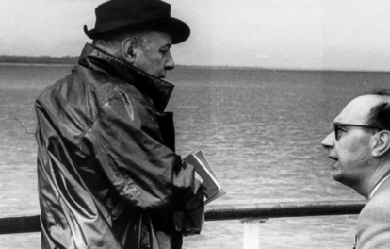
Sir John Betjeman, CBE (28 August 1906 – 19 May 1984) was an English poet, writer, and broadcaster who described himself in Who’s Who as a “poet and hack”. He was Poet Laureate of the United Kingdom from 1972 until his death. He was a founding member of the Victorian Society and a passionate defender of Victorian architecture. He began his career as a journalist and ended it as one of the most popular British Poets Laureate and a much-loved figure on British television. Life Early life and education Betjeman was born “John Betjemann”. His parents, Mabel (née Dawson) and Ernest Betjemann, had a family firm at 34–42 Pentonville Road which manufactured the kind of ornamental household furniture and gadgets distinctive to Victorians. The family name was changed to the less German-looking “Betjeman” during the First World War. His father’s forebears had actually come from the present day Netherlands and had, ironically, added the extra –n during the Fourth Anglo-Dutch War to avoid the anti-Dutch sentiment existing at the time, more than a century earlier, setting up their home and business in Islington, London. Betjeman was baptised at St Anne’s Church, Highgate Rise, a 19th-century church at the foot of Highgate West Hill. The family lived at Parliament Hill Mansions in the Lissenden Gardens private estate in Gospel Oak in north London. In 1909, the Betjemanns moved half a mile north to more opulent Highgate. From West Hill they lived in the reflected glory of the Burdett-Coutts estate: “Here from my eyrie, as the sun went down, I heard the old North London puff and shunt, Glad that I did not live in Gospel Oak.” Betjeman’s early schooling was at the local Byron House and Highgate School, where he was taught by poet T. S. Eliot. After this, he boarded at the Dragon School preparatory school in North Oxford and Marlborough College, a public school in Wiltshire. In his penultimate year, he joined the secret Society of Amici in which he was a contemporary of both Louis MacNeice and Graham Shepard. He founded The Heretick, a satirical magazine that lampooned Marlborough’s obsession with sport. While at school, his exposure to the works of Arthur Machen won him over to High Church Anglicanism, a conversion of importance to his later writing and conception of the arts. Magdalen College, Oxford Betjeman entered the University of Oxford with difficulty, having failed the mathematics portion of the university’s matriculation exam, Responsions. He was, however, admitted as a commoner (i.e. a non-scholarship student) at Magdalen College and entered the newly created School of English Language and Literature. At Oxford, Betjeman made little use of the academic opportunities. His tutor, a young C. S. Lewis, regarded him as an “idle prig” and Betjeman in turn considered Lewis unfriendly, demanding, and uninspired as a teacher. Betjeman particularly disliked the coursework’s emphasis on linguistics, and dedicated most of his time to cultivating his social life and his interest in English ecclesiastical architecture, and to private literary pursuits. At Oxford he was a friend of Maurice Bowra, later (1938 to 1970) to be Warden of Wadham. Betjeman had a poem published in Isis, the university magazine, and served as editor of the Cherwell student newspaper during 1927. His first book of poems was privately printed with the help of fellow student Edward James. He famously brought his teddy bear Archibald Ormsby-Gore up to Magdalen with him, the memory of which inspired his Oxford contemporary Evelyn Waugh to include Sebastian Flyte’s teddy Aloysius in Brideshead Revisited. Much of this period of his life is recorded in his blank verse autobiography Summoned by Bells published in 1960 and made into a television film in 1976. It is a common misapprehension, cultivated by Betjeman himself, that he did not complete his degree because he failed to pass the compulsory holy scripture examination, known colloquially as “Divvers”, short for “Divinity”. In Hilary term 1928, Betjeman failed Divinity for the second time. He had to leave the university for the Trinity term to prepare for a retake of the exam; he was then allowed to return in October. Betjeman then wrote to the Secretary of the Tutorial Board at Magdalen, G. C. Lee, asking to be entered for the Pass School, a set of examinations taken on rare occasions by undergraduates who are deemed unlikely to achieve an honours degree. In Summoned by Bells Betjeman claims that his tutor, C. S. Lewis, said “You’d have only got a third”– but he had informed the tutorial board that he thought Betjeman would not achieve an honours degree of any class. Permission to sit the Pass School was granted. Betjeman famously decided to offer a paper in Welsh. Osbert Lancaster tells the story that a tutor came by train twice a week (first class) from Aberystwyth to teach Betjeman. However, Jesus College had a number of Welsh tutors who more probably would have taught him. Betjeman finally had to leave at the end of the Michaelmas term, 1928. Betjeman did pass his Divinity examination on his third try but was 'sent down’ after failing the Pass School. He had achieved a satisfactory result in only one of the three required papers (on Shakespeare and other English authors). Betjeman’s academic failure at Oxford rankled with him for the rest of his life and he was never reconciled with C.S. Lewis, towards whom he nursed a bitter detestation. This situation was perhaps complicated by his enduring love of Oxford, from which he accepted an honorary doctorate of letters in 1974. After university Betjeman left Oxford without a degree. Whilst there, however, he had made the acquaintance of people who would later influence his work, including Louis MacNeice and W. H. Auden. He worked briefly as a private secretary, school teacher and film critic for the Evening Standard, where he also wrote for their high-society gossip column, the Londoner’s Diary. He was employed by the Architectural Review between 1930 and 1935, as a full-time assistant editor, following their publishing of some of his freelance work. Timothy Mowl (2000) says, “His years at the Architectural Review were to be his true university”. At this time, while his prose style matured, he joined the MARS Group, an organisation of young modernist architects and architectural critics in Britain. Betjeman’s sexuality can best be described as bisexual, and his longest and best documented relationships were with women, and a fairer analysis of his sexuality may be that he was “the hatcher of a lifetime of schoolboy crushes– both gay and straight”, most of which progressed no further. Nevertheless, he has been considered “temperamentally gay”, and even became a penpal of Lord Alfred 'Bosie’ Douglas of Oscar Wilde fame. On 29 July 1933 he married the Hon. Penelope Chetwode, the daughter of Field Marshal Lord Chetwode. The couple lived in Berkshire and had a son, Paul, in 1937, and a daughter, Candida, in 1942. In 1937, Betjeman was a churchwarden at Uffington, the Berkshire town (since relocated to Oxfordshire) where he lived. That year, he paid for the cleaning of the church’s royal arms and later presided over the conversion of the church’s oil lamps to electricity. The Shell Guides were developed by Betjeman and Jack Beddington, a friend who was publicity manager with Shell-Mex Ltd, to guide Britain’s growing number of motorists around the counties of Britain and their historical sites. They were published by the Architectural Press and financed by Shell. By the start of World War II 13 had been published, of which Cornwall (1934) and Devon (1936) were written by Betjeman. A third, Shropshire, was written with and designed by his good friend John Piper in 1951. In 1939, Betjeman was rejected for active service in World War II but found war work with the films division of the Ministry of Information. In 1941 he became British press attaché in neutral Dublin, Ireland, working with Sir John Maffey. He may have been involved with the gathering of intelligence. He is reported to have been selected for assassination by the IRA. The order was rescinded after a meeting with an unnamed Old IRA man who was impressed by his works. Betjeman wrote a number of poems based on his experiences in “Emergency” World War II Ireland including "The Irish Unionist’s Farewell to Greta Hellstrom in 1922" (written during the war) which contained the refrain “Dungarvan in the rain”. The object of his affections, “Greta”, has remained a mystery until recently revealed to have been a member of a well-known Anglo-Irish family of Western county Waterford. His official brief included establishing friendly contacts with leading figures in the Dublin literary scene: he befriended Patrick Kavanagh, then at the very start of his career. Kavanagh celebrated the birth of Betjeman’s daughter with a poem “Candida”; another well-known poem contains the line Let John Betjeman call for me in a car. After World War II Betjeman’s wife Penelope became a Roman Catholic in 1948. The couple drifted apart and in 1951 he met Lady Elizabeth Cavendish, with whom he developed an immediate and lifelong friendship. By 1948 Betjeman had published more than a dozen books. Five of these were verse collections, including one in the USA. Sales of his Collected Poems in 1958 reached 100,000. The popularity of the book prompted Ken Russell to make a film about him, John Betjeman: A Poet in London (1959). Filmed in 35mm and running 11 minutes and 35 seconds, it was first shown on BBC’s Monitor programme. He continued writing guidebooks and works on architecture during the 1960s and 1970s and started broadcasting. He was a founder member of the Victorian Society (1958). Betjeman was closely associated with the culture and spirit of Metro-land, as outer reaches of the Metropolitan Railway were known before the war. In 1973 he made a widely acclaimed television documentary for the BBC called Metro-Land, directed by Edward Mirzoeff. On the centenary of Betjeman’s birth in 2006, his daughter led two celebratory railway trips: from London to Bristol, and through Metro-land, to Quainton Road. In 1974, Betjeman and Mirzoeff followed up Metro-Land with A Passion for Churches, a celebration of Betjeman’s beloved Church of England, filmed entirely in the Diocese of Norwich. In 1975, he proposed that the Fine Rooms of Somerset House should house the Turner Bequest, so helping to scupper the plan of the Minister for the Arts for a Theatre Museum to be housed there. In 1977 the BBC broadcast “The Queen’s Realm: A Prospect of England”, an aerial anthology of English landscape, music and poetry, selected by Betjeman and produced by Edward Mirzoeff, in celebration of the Queen’s Silver Jubilee. Betjeman was fond of the ghost stories of M.R. James and supplied an introduction to Peter Haining’s book M.R. James– Book of the Supernatural. He was susceptible to the supernatural. Diana Mitford tells the story of Betjeman staying at her country home, Biddesden House, in the 1920s. She says, “he had a terrifying dream, that he was handed a card with wide black edges, and on it his name was engraved, and a date. He knew this was the date of his death”. For the last decade of his life Betjeman suffered increasingly from Parkinson’s disease. He died at his home in Trebetherick, Cornwall on 19 May 1984, aged 77, and is buried nearby at St Enodoc’s Church. Poetry Betjeman’s poems are often humorous, and in broadcasting he exploited his bumbling and fogeyish image. His wryly comic verse is accessible and has attracted a great following for its satirical and observant grace. Auden said in his introduction to Slick But Not Streamlined, “so at home with the provincial gaslit towns, the seaside lodgings, the bicycle, the harmonium.” His poetry is similarly redolent of time and place, continually seeking out intimations of the eternal in the manifestly ordinary. There are constant evocations of the physical chaff and clutter that accumulates in everyday life, the miscellanea of an England now gone but not beyond the reach of living memory. He talks of Ovaltine and Sturmey-Archer bicycle gears. “Oh! Fuller’s angel cake, Robertson’s marmalade,” he writes, “Liberty lampshades, come shine on us all.” In a 1962 radio interview he told teenage questioners that he could not write about 'abstract things’, preferring places, and faces. Philip Larkin wrote of his work, "how much more interesting & worth writing about Betjeman’s subjects are than most other modern poets, I mean, whether so-and-so achieves some metaphysical inner unity is not really so interesting to us as the overbuilding of rural Middlesex". Betjeman was a practising Anglican and his religious beliefs come through in some of his poems. He combined piety with a nagging uncertainty about the truth of Christianity. Unlike Thomas Hardy, who disbelieved in the truth of the Christmas story while hoping it might be so, Betjeman affirms his belief even while fearing it might be false. In the poem “Christmas”, one of his most openly religious pieces, the last three stanzas that proclaim the wonder of Christ’s birth do so in the form of a question “And is it true...?” His views on Christianity were expressed in his poem “The Conversion of St. Paul”, a response to a radio broadcast by humanist Margaret Knight: Betjeman became Poet Laureate of the United Kingdom in 1972, the first Knight Bachelor to be appointed (the only other, Sir William Davenant, had been knighted after his appointment). This role, combined with his popularity as a television performer, ensured that his poetry reached an audience enormous by the standards of the time. Similarly to Tennyson, he appealed to a wide public and managed to voice the thoughts and aspirations of many ordinary people while retaining the respect of many of his fellow poets. This is partly because of the apparently simple traditional metrical structures and rhymes he uses. In the early 1970s, he began a recording career of four albums on Charisma Records which included Betjeman’s Banana Blush (1974) and Late Flowering Love (1974), where his poetry reading is set to music with overdubbing by leading musicians of the time. His recording catalogue extends to nine albums, four singles and two compilations. Betjeman and architecture Betjeman had a fondness for Victorian architecture and was a founding member of the Victorian Society. He wrote on this subject in First and Last Loves (1952) and more extensively in London’s Historic Railway Stations in 1972, defending the beauty of twelve stations. He led the campaign to save Holy Trinity, Sloane Street in London when it was threatened with demolition in the early 1970s. He fought a spirited but unsuccessful campaign to save the Propylaeum, known commonly as the Euston Arch, London. He is considered instrumental in helping to save St Pancras railway station, London, and was commemorated when it became an international terminus for Eurostar in November 2007. He called the plan to demolish St Pancras a “criminal folly”. About it he wrote, "What [the Londoner] sees in his mind’s eye is that cluster of towers and pinnacles seen from Pentonville Hill and outlined against a foggy sunset, and the great arc of Barlow’s train shed gaping to devour incoming engines, and the sudden burst of exuberant Gothic of the hotel seen from gloomy Judd Street.” On the reopening of St Pancras station in 2007, a statue of Betjeman was commissioned from curators Futurecity. A proposal by artist Martin Jennings was selected from a shortlist. The finished work was erected in the station at platform level, including a series of slate roundels depicting selections of Betjeman’s writings. Betjeman was given the remaining two-year lease on Victorian Gothic architect William Burges’s Tower House in Holland Park upon leaseholder Mrs E.R.B. Graham’s death in 1962. Betjeman felt he could not afford the financial implications of taking over the house permanently, with his potential liability for £10,000 of renovations upon the expiration of the lease. After damage from vandals, restoration began in 1966. Betjeman’s lease included furniture from the house by Burges, and Betjeman gave three pieces, the Zodiac settle, the Narcissus washstand, and the Philosophy cabinet, to Evelyn Waugh. Betjeman responded to architecture as the visible manifestation of society’s spiritual life as well as its political and economic structure. He attacked speculators and bureaucrats for what he saw as their rapacity and lack of imagination. In the preface of his collection of architectural essays First and Last Loves he says, “We accept the collapse of the fabrics of our old churches, the thieving of lead and objects from them, the commandeering and butchery of our scenery by the services, the despoiling of landscaped parks and the abandonment to a fate worse than the workhouse of our country houses, because we are convinced we must save money.” In a BBC film made in 1968 but not broadcast at that time, Betjeman described the sound of Leeds to be of “Victorian buildings crashing to the ground”. He went on to lambast John Poulson’s British Railways House (now City House), saying how it blocked all the light out to City Square and was only a testament to money with no architectural merit. He also praised the architecture of Leeds Town Hall. In 1969 Betjeman contributed the foreword to Derek Linstrum’s Historic Architecture of Leeds. Betjeman was for over 20 years a trustee of the Bath Preservation Trust and was Vice-President from 1965 to 1971, at a time when Bath—a city rich in Georgian architecture—was coming under increasing pressure from modern developers, and a major road was proposed to cut across it. He also created a short television documentary called Architecture of Bath, in which he voiced his concerns about the way the city’s architectural heritage was being mistreated. From 1946 to 1948 he had served as Secretary to the Oxford Preservation Trust. Legacy A memorial window, designed by John Piper, in All Saints’ Church, Farnborough, Hampshire, where Betjeman lived in the nearby Rectory. The Betjeman Millennium Park at Wantage in Oxfordshire, where he lived from 1951 to 1972 and where he set his book Archie and the Strict Baptists One of the roads in Pinner, a town covered in Betjeman’s film Metro-Land is called Betjeman Close, while another in Chorleywood, also covered in Metro-Land, is called Betjeman Gardens. The John Betjeman Poetry Competition for Young People (2006–) is open to 10- to 13-year-olds living anywhere in the British Isles (including the Republic of Ireland), with a first prize of £1,000. In addition to prizes for individual finalists, state schools who enter pupils may win one of six one-day poetry workshops. One of the engines on the pier railway at Southend-on-Sea is named Sir John Betjeman (the other Sir William Heygate). A British Rail Class 86 AC electric locomotive, 86229, was named Sir John Betjeman by the man in person at St Pancras station on 24 June 1983, just before his death; it was renamed Lions Group International in 1998 and is now in storage. The nameplate is now carried by Class 90 locomotive 90007, in service on the London– Norwich route. In 2003, to mark their centenary, the residents of Lissenden Gardens in north London put up a blue plaque to mark Betjeman’s birthplace. In 2006, a blue plaque was installed on Betjeman’s childhood home, 31 West Hill, Highgate, London N6. In 2006 a blue plaque was erected at Garrard’s Farm, Uffington, Oxfordshire which had been his first married home. The statue of Betjeman at St Pancras station in London by sculptor Martin Jennings was unveiled in 2007. In 2012 Betjeman featured on BBC Radio 4 as author of the week on The Write Stuff. On 1 September 2014 Betjeman was the subject of the hour-long BBC Four documentary Return to Betjemanland, presented by his biographer A. N. Wilson. At the start of the broadcast, there was a spoken tribute to Betjeman’s daughter Candida Lycett Green, who had died just twelve days earlier on 19 August, aged 71. On 28 August 2016 a bust of Betjeman based on the St Pancras statue was unveiled outside the Vale and Downland Museum in Wantage, Oxfordshire. Awards and honours * 1960 Queen’s Medal for Poetry * 1960 Commander of the Order of the British Empire (CBE) * 1968 Companion of Literature, the Royal Society of Literature * 1969 Knight Bachelor * 1972 Poet Laureate * 1973 Honorary Member, the American Academy of Arts and Letters. * 2011 Honoured by the University of Oxford, his alma mater, as one of its 100 most distinguished members from ten centuries. Works * Mount Zion (1932) * Continual Dew (1937) * Old Lights For New Chancels (1940) * New Bats in Old Belfries (1945) * A Few Late Chrysanthemums (1954) * Poems in the Porch (1954) * Summoned by Bells (1960) * High and Low (1966) * A Nip in the Air (1974) References Wikipedia—https://en.wikipedia.org/wiki/John_Betjeman

Hello, To all yea warrior poets of old, I say "hail!" I have been a fond fan of poetry my whole life, and have written and published a self-made poet's dream book about everything I love. Please check it out and check the link; I'm an up and coming writer and wish to spread the good words of my work to many people, God willing you will like what I've done :) I hope you enjoy my verses, if you want more my title "Life, Death, and Everything Else" is available on amazon and createspace and is listed on both, print on demand. Thank you! http://sarospoetry.blogspot.com/ This is the link in case you love what I've done and wish to own the full book, it is 13.95 and 350 pages. Here's the link: https://www.createspace.com/4845662
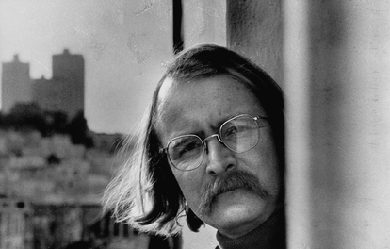
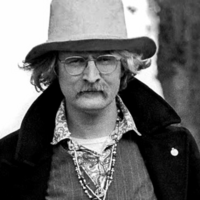
Richard Gary Brautigan (January 30, 1935 – ca. September 16, 1984) was an American novelist, poet, and short story writer. His work often employs black comedy, parody, and satire. He is best known for his 1967 novel Trout Fishing in America. Brautigan was born in Tacoma, Washington, the only child of Bernard Frederick “Ben” Brautigan, Jr., a factory worker and laborer, and Lulu Mary “Mary Lou” Keho, a waitress. In 1984, at age 49, Richard Brautigan had moved to Bolinas, California, where he was living alone in a large, old house that he had bought with his earnings years earlier. He died of a self-inflicted .44 Magnum gunshot wound to the head.

I am a 24 year old female who grew up in the custody of the state I have bi-polar , PTSD an depression I have been threw hell but I have managed to survive an make it day to day I love music an dancing I love to read an enjoy life I believe everything happens for a reason an to not give up


